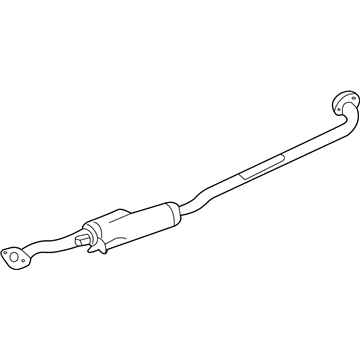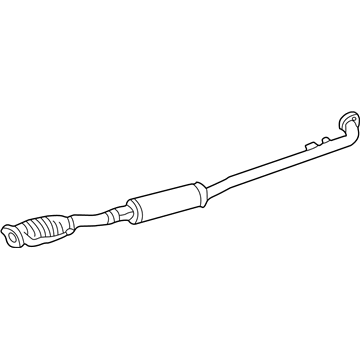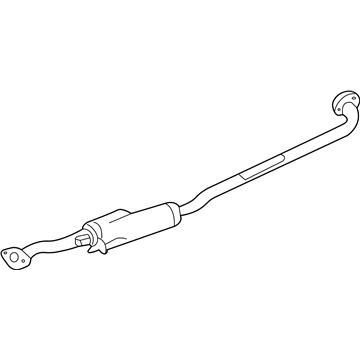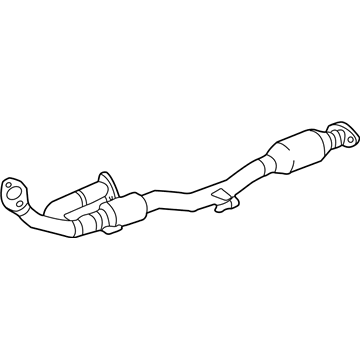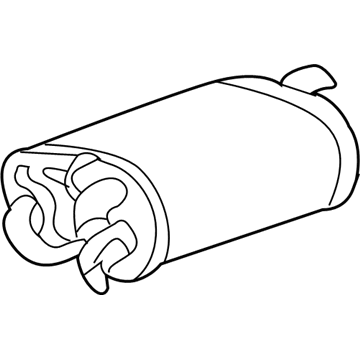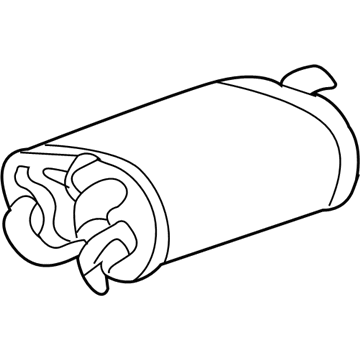×
ToyotaParts- Hello
- Login or Register
- Quick Links
- Live Chat
- Track Order
- Parts Availability
- RMA
- Help Center
- Contact Us
- Shop for
- Toyota Parts
- Scion Parts
My Garage
My Account
Cart
OEM 2008 Toyota Solara Exhaust Pipe
Exhaust Tail Pipe- Select Vehicle by Model
- Select Vehicle by VIN
Select Vehicle by Model
orMake
Model
Year
Select Vehicle by VIN
For the most accurate results, select vehicle by your VIN (Vehicle Identification Number).
9 Exhaust Pipes found
2008 Toyota Solara Center Pipe
Part Number: 17420-0A300$372.84 MSRP: $500.45You Save: $127.61 (26%)Ships in 1-3 Business DaysProduct Specifications- Other Name: Pipe Assembly, Exhaust; Exhaust Intermediate Pipe; Exhaust Pipe; Pipe Assembly, Exhaust, Center
- Position: Center
- Part Name Code: 17420
- Item Weight: 17.50 Pounds
- Item Dimensions: 52.9 x 19.8 x 9.3 inches
- Condition: New
- Fitment Type: Direct Replacement
- SKU: 17420-0A300
- Warranty: This genuine part is guaranteed by Toyota's factory warranty.
2008 Toyota Solara Intermed Pipe, Center
Part Number: 17420-0A290$323.63 MSRP: $423.21You Save: $99.58 (24%)Ships in 1-3 Business DaysProduct Specifications- Other Name: Pipe Assembly, Exhaust; Exhaust Intermediate Pipe; Exhaust Pipe; Center Pipe; Pipe Assembly, Exhaust, Center
- Position: Center
- Part Name Code: 17420
- Item Weight: 17.40 Pounds
- Item Dimensions: 50.4 x 20.4 x 9.0 inches
- Condition: New
- Fitment Type: Direct Replacement
- SKU: 17420-0A290
- Warranty: This genuine part is guaranteed by Toyota's factory warranty.
2008 Toyota Solara Center Pipe
Part Number: 17420-0H220$310.58 MSRP: $406.15You Save: $95.57 (24%)Ships in 1-3 Business DaysProduct Specifications- Other Name: Pipe Assembly, Exhaust; Exhaust Intermediate Pipe; Exhaust Pipe; Pipe Assembly, Exhaust, Center
- Position: Center
- Part Name Code: 17420
- Item Weight: 16.30 Pounds
- Item Dimensions: 50.9 x 19.6 x 9.4 inches
- Condition: New
- Fitment Type: Direct Replacement
- SKU: 17420-0H220
- Warranty: This genuine part is guaranteed by Toyota's factory warranty.
2008 Toyota Solara Front Pipe
Part Number: 17410-0A370$1477.42 MSRP: $1983.12You Save: $505.70 (26%)Ships in 1-3 Business DaysProduct Specifications- Other Name: Pipe Assembly, Exhaust; Catalytic Converter; Exhaust Pipe; Converter & Pipe; Pipe Assembly, Exhaust, Front
- Position: Front
- Part Name Code: 17410
- Item Weight: 7.30 Pounds
- Item Dimensions: 30.2 x 2.3 x 19.3 inches
- Condition: New
- Fitment Type: Direct Replacement
- SKU: 17410-0A370
- Warranty: This genuine part is guaranteed by Toyota's factory warranty.
2008 Toyota Solara Front Pipe
Part Number: 17410-0H180$1115.13 MSRP: $1496.83You Save: $381.70 (26%)Ships in 1-3 Business DaysProduct Specifications- Other Name: Pipe Assembly, Exhaust; Catalytic Converter; Exhaust Pipe; Converter & Pipe; Pipe Assembly, Exhaust, Front
- Position: Front
- Part Name Code: 17410
- Item Weight: 11.80 Pounds
- Item Dimensions: 47.7 x 18.4 x 9.5 inches
- Condition: New
- Fitment Type: Direct Replacement
- SKU: 17410-0H180
- Warranty: This genuine part is guaranteed by Toyota's factory warranty.
2008 Toyota Solara Muffler
Part Number: 17430-0A300$535.82 MSRP: $719.22You Save: $183.40 (26%)Ships in 1-3 Business DaysProduct Specifications- Other Name: Pipe Assembly, Exhaust Tail; Exhaust Muffler; Pipe Assembly, Exhaust, Tail
- Part Name Code: 17430
- Item Weight: 10.80 Pounds
- Item Dimensions: 42.8 x 12.7 x 9.0 inches
- Condition: New
- Fitment Type: Direct Replacement
- SKU: 17430-0A300
- Warranty: This genuine part is guaranteed by Toyota's factory warranty.
2008 Toyota Solara Muffler
Part Number: 17430-0A310$426.18 MSRP: $572.06You Save: $145.88 (26%)Ships in 1-3 Business DaysProduct Specifications- Other Name: Pipe Assembly, Exhaust Tail; Exhaust Muffler; Pipe Assembly, Exhaust, Tail
- Manufacturer Note: SPORT PACKAGE(HID HEAD LAMP)
- Part Name Code: 17430
- Item Weight: 10.90 Pounds
- Item Dimensions: 43.2 x 12.3 x 9.0 inches
- Condition: New
- Fitment Type: Direct Replacement
- SKU: 17430-0A310
- Warranty: This genuine part is guaranteed by Toyota's factory warranty.
2008 Toyota Solara Muffler
Part Number: 17430-0H240$474.08 MSRP: $636.35You Save: $162.27 (26%)Ships in 1-3 Business DaysProduct Specifications- Other Name: Pipe Assembly, Exhaust Tail; Exhaust Muffler; Exhaust Muffler Assembly; Pipe Assembly, Exhaust, Tail
- Part Name Code: 17430
- Item Weight: 10.20 Pounds
- Item Dimensions: 43.6 x 12.7 x 9.1 inches
- Condition: New
- Fitment Type: Direct Replacement
- SKU: 17430-0H240
- Warranty: This genuine part is guaranteed by Toyota's factory warranty.
2008 Toyota Solara Muffler
Part Number: 17430-0H250$396.82 MSRP: $532.65You Save: $135.83 (26%)Ships in 1-3 Business DaysProduct Specifications- Other Name: Pipe Assembly, Exhaust Tail; Exhaust Muffler; Pipe Assembly, Exhaust, Tail
- Manufacturer Note: SPORT PACKAGE(HID HEAD LAMP)
- Part Name Code: 17430
- Item Weight: 10.60 Pounds
- Item Dimensions: 42.8 x 12.6 x 9.2 inches
- Condition: New
- Fitment Type: Direct Replacement
- SKU: 17430-0H250
- Warranty: This genuine part is guaranteed by Toyota's factory warranty.
2008 Toyota Solara Exhaust Pipe
Looking for affordable OEM 2008 Toyota Solara Exhaust Pipe? Explore our comprehensive catalogue of genuine 2008 Toyota Solara Exhaust Pipe. All our parts are covered by the manufacturer's warranty. Plus, our straightforward return policy and speedy delivery service ensure an unparalleled shopping experience. We look forward to your visit!
2008 Toyota Solara Exhaust Pipe Parts Q&A
- Q: How to install the exhaust pipe on 2008 Toyota Solara?A: Installation of the exhaust pipe of 2AZ-FE engine requires the tail pipe baffle, tail exhaust pipe assembly and installation of a new gasket. Install secure brackets and the heated oxygen sensor and follow up with connection of the center exhaust pipe assembly. Lastly, inspect leaks and repair or screw in damaged components.
